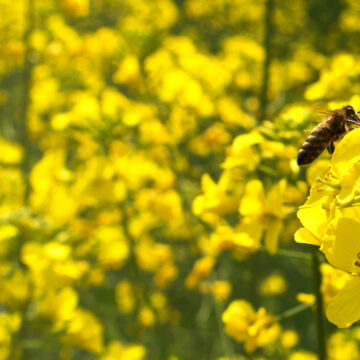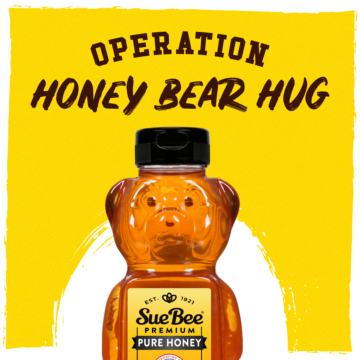Bee Curious
Dear Sioux Honey: Can my dog eat honey? Is crystallized honey edible? How many honeybees are in the world?
Each month, we get all sorts of questions at Sioux Honey®, like:
How long do bees live?
Is honey kosher?
When can babies start eating honey?
What kinds of food do honeybees pollinate?
We love receiving these questions. And we really love answering them. When it comes to honeybees and honey – and the Sioux Honey® beekeeper families that collect it – the questions and fascinating answers are endless.
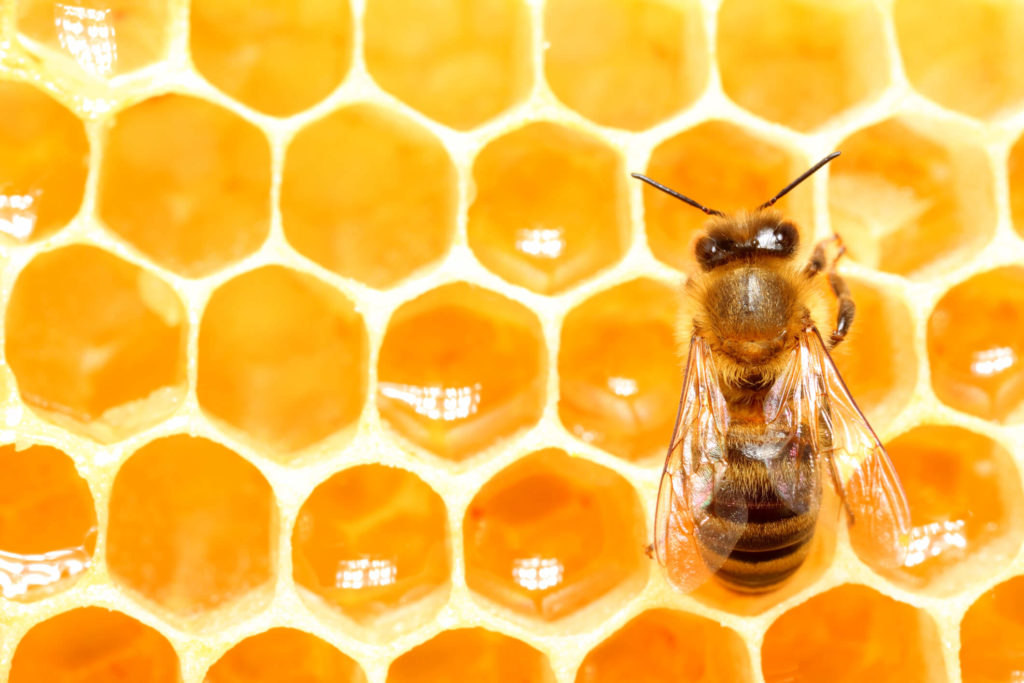
‘Good things come in small packages’
How small? Well, a single honeybee makes 1/12 of a teaspoon in its lifespan. That’s tiny! Picture an M&M. Now, bite it in half. OK, now bite that in half. That’s about the volume of honey that a bee produces – IN ITS WHOLE LIFE!
Think about how many honeybees it takes to make a single pound of Sue Bee® honey or Aunt Sue’s® Raw & Unfiltered Honey. Consider:
- The average worker honeybee (females) lives for about six weeks. The drones (males) live a few weeks. And the queen has a lifespan of two to three years, on average.
- It would take 12 honeybees 72 weeks (six weeks each) to make a single teaspoon of honey.
- There are 64 teaspoons in a pound of honey. That’s 768 honeybees working 4,608 weeks (six weeks each) to make a pound of honey.
- To put that into further perspective, consider that Sioux Honey’s 200+ family beekeepers collect about 40 million pounds of honey each year. That means 37.7 billion bees contribute to that total.
- By the way, how many flowers do the bees have to visit to collect nectar for that one pound of honey? About two million.
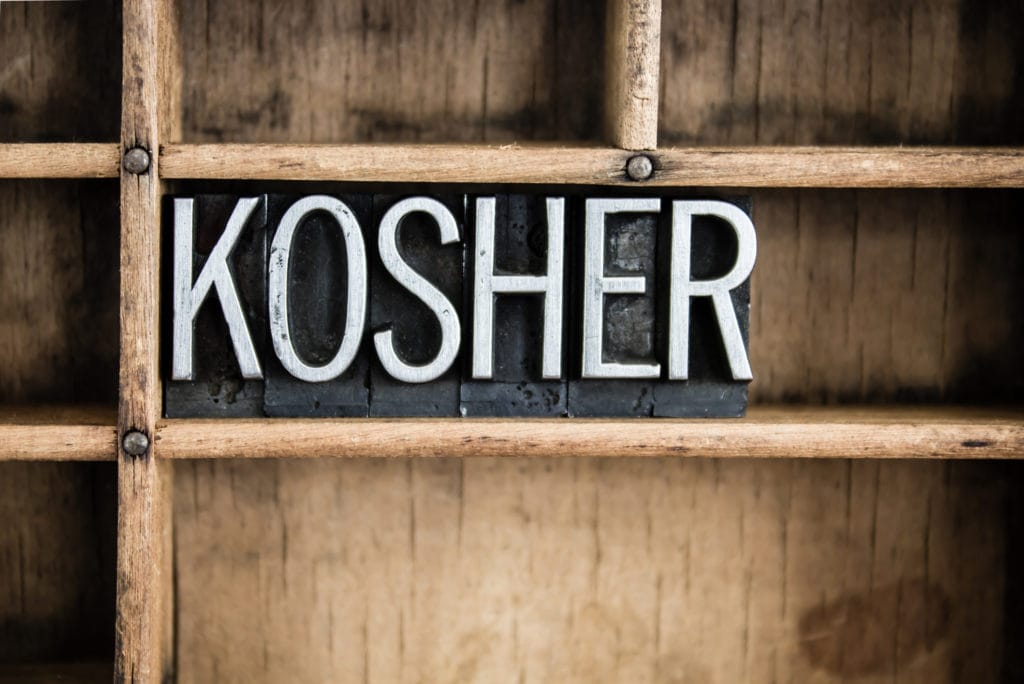
Honey … it’s kosher, right?
Yes, honey is considered kosher.
EarthKosher.com explains it this way: “Because the bee releases the honey from within, it isn’t produced by the bee’s body, making it kosher. (Unlike a non-kosher camel that produces non-kosher milk.) … While there are scriptures that prohibit one from eating a flying insect, there aren’t any verses that prohibit someone from eating what a flying insect excretes – i.e. honey.
“Once you really understand how bees turn that sweet nectar into honey, you actually find that the nectar is never digested. Honeybees simply transform nectar into honey. It is not a secretion of the bee, either. The lovely honeybee only acts as a carrier or facilitator of honey, as opposed to milk produced by a cow or eggs produced by a chicken. This scientific fact is what makes honey a kosher product.”

When is it safe for babies to eat honey?
Infants should not eat honey until they are one year old. Occasionally, honey can contain bacteria that produce toxins in a baby’s intestines, leading to infant botulism, which is a “rare but serious gastrointestinal condition caused by exposure to Clostridium botulinum spores,” says mayoclinic.com.
For this reason, it is recommended to wait until your child is more than one year old before you start letting them enjoy honey.

How about my dog? Can he eat honey?
Yes, says the American Kennel Club. “Honey is safe for dogs to eat in small quantities. It contains natural sugars and small amounts of vitamins and minerals and is used as a sweetener in many foods and beverages.”
However, like human infants, the American Kennel Club recommends that you not feed honey to puppies. “Raw honey should not be fed to puppies or dogs with compromised immune systems, as it may contain the presence of botulism spores. Honey should not be given to diabetic or obese dogs,” says akc.org.
By the way, if you’re looking for a delicious homemade treat for your four-legged friends, try one of our Sue Bee® recipes, like this one for our Peanut Butter Banana Honey Pet Treats.
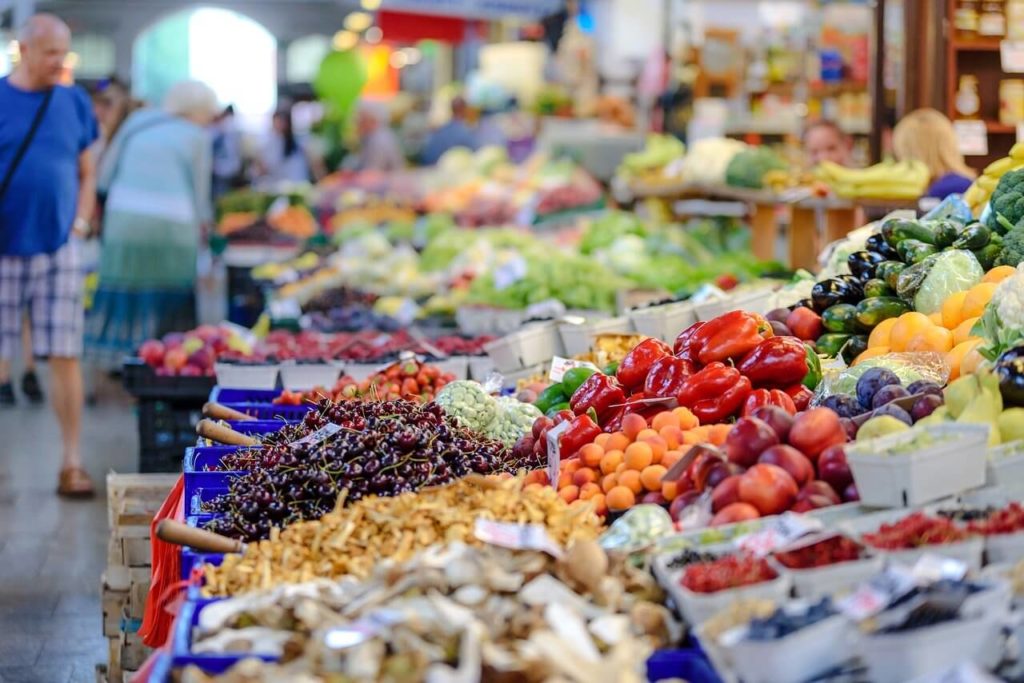
More fun with honey numbers
As previously mentioned, we rely on bees to pollinate 71 of the 100 crops that provide 90% of the world’s food. In the U.S. alone, honeybees pollinate an estimated $15 billion worth of crops every year. They say that one in every three bites of food we eat depends on bee pollination.
Here are just a few foods that would disappear without the honeybee:
- Apples
- Almonds
- Blueberries
- Avocados
- Cucumbers
- Onions
- Oranges
- Pumpkins
- Grapefruit
- Cherries
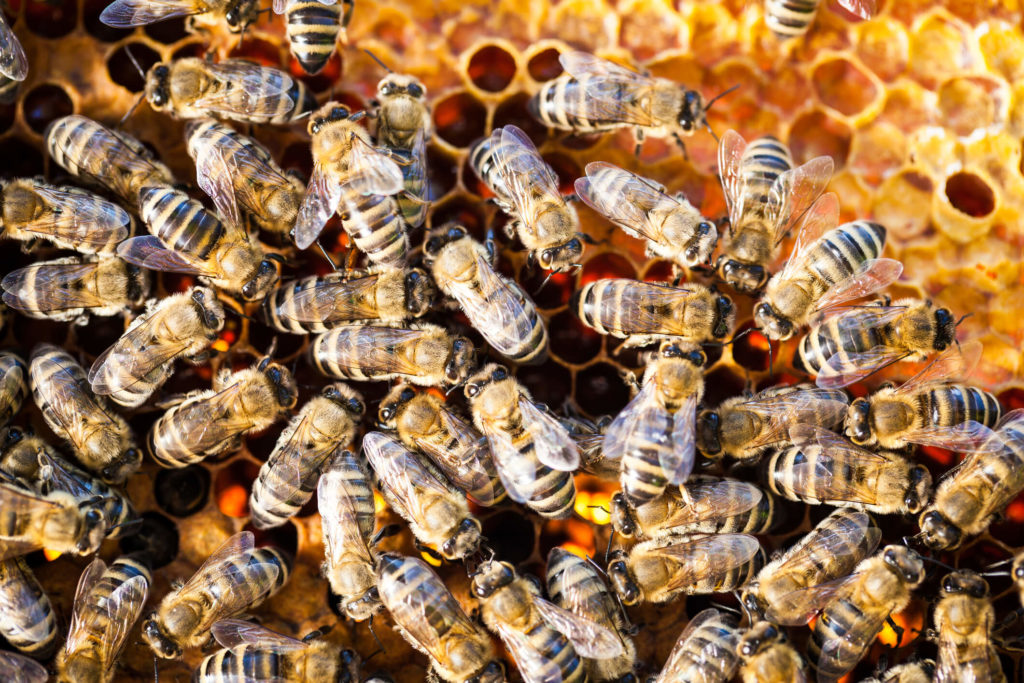
How many honeybees are there?
In the U.S., there were about 2.81 million colonies of honeybees (kept by commercial beekeepers) producing honey in 2019, according to the USDA. (Also, according to the USDA, each of those colonies averaged 55.8 pounds of honey each.)
So, how many bees is that? Each colony (each hive) of bees contains between 20,000 and 60,000, so let’s take the middle number and say, 40,000. Multiply that by 2.8 million and you get about 112 billion honeybees.
Those figures are only for the United States, by the way. And that’s only commercial honeybees producing the honey we eat. It doesn’t take into account the feral honeybees in the U.S.
According to the United Nations Food and Agriculture Organization’s website, there were 92 million commercial/domesticated beehives in 2018. So that’s 3.6 trillion honeybees!
Wait, there’s more! The estimates for wild/feral honeybees in the world are a wide range – from 400 million to 800 million. If we take the middle ground again and go with 600 million, and with an average of 40,000 honeybees per hive, that’s 24 trillion honeybees. (Our calculator just exploded.)
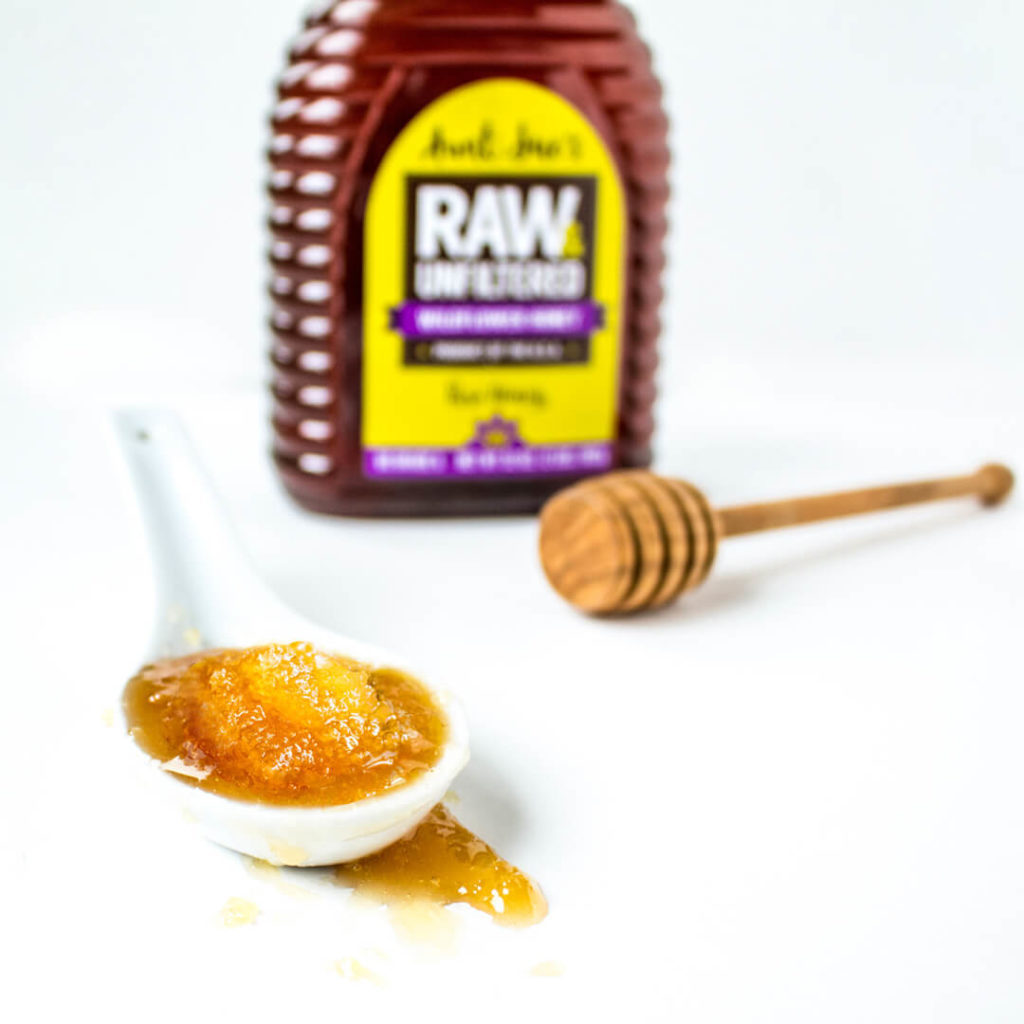
Is crystallized honey safe?
Yes. Some people even prefer crystallized honey. They say it’s easier to spread on bagels and toast.
Honey doesn’t have a shelf life. In fact, according to National Geographic, archaeologists found pots of crystallized honey in ancient tombs that date back 3,000 years. It’s the world’s oldest sample, and still perfectly edible.
So, how does honey crystallize? And why? Check out our blog that tells you everything you ever wanted to know about crystallized honey.
Still curious?
If you’ve made it this far and you’re still curious about honey and bees, welcome to the club. We are, too! Which is why you can keep checking back to SiouxHoney.com for more articles talking about the wonderful world of honey.


